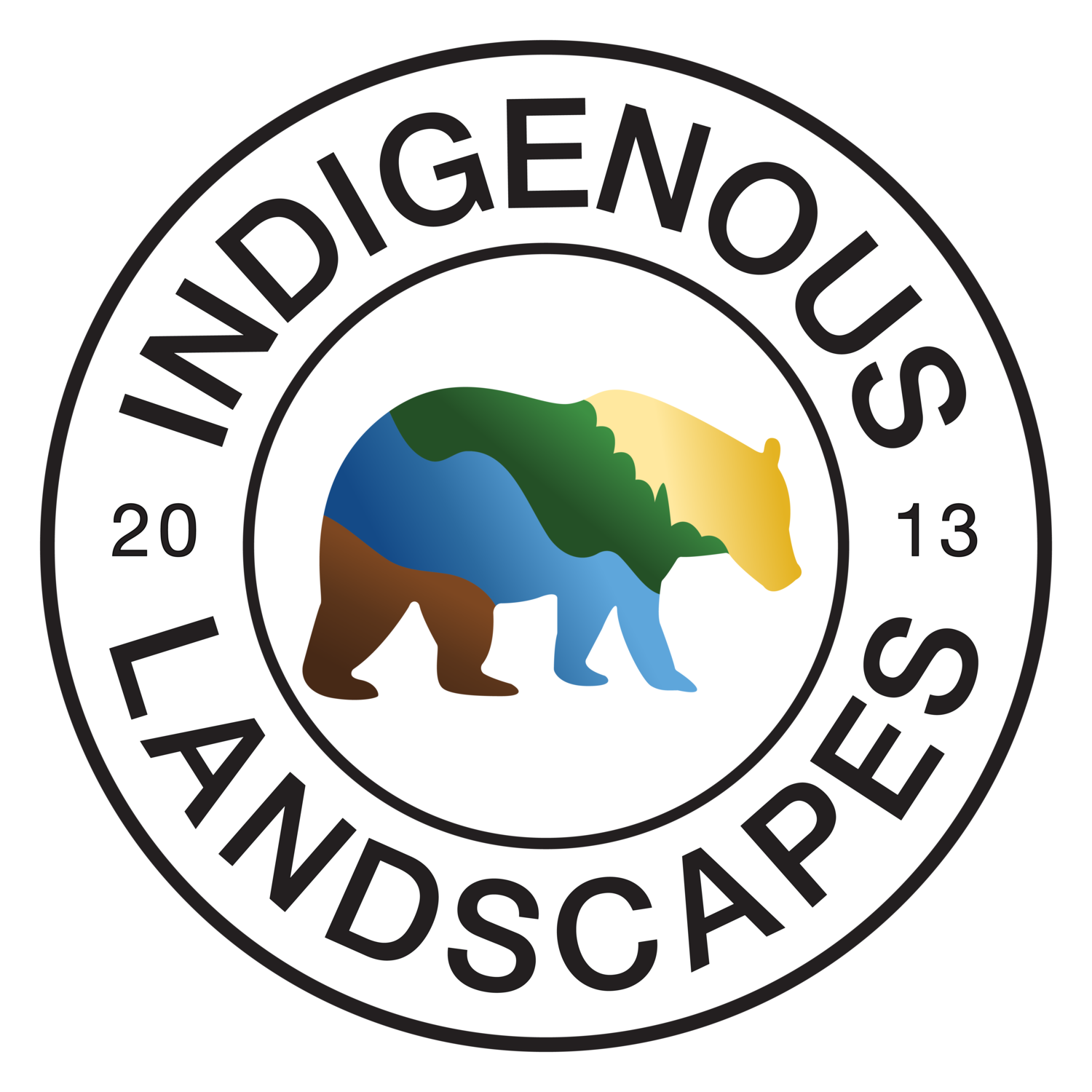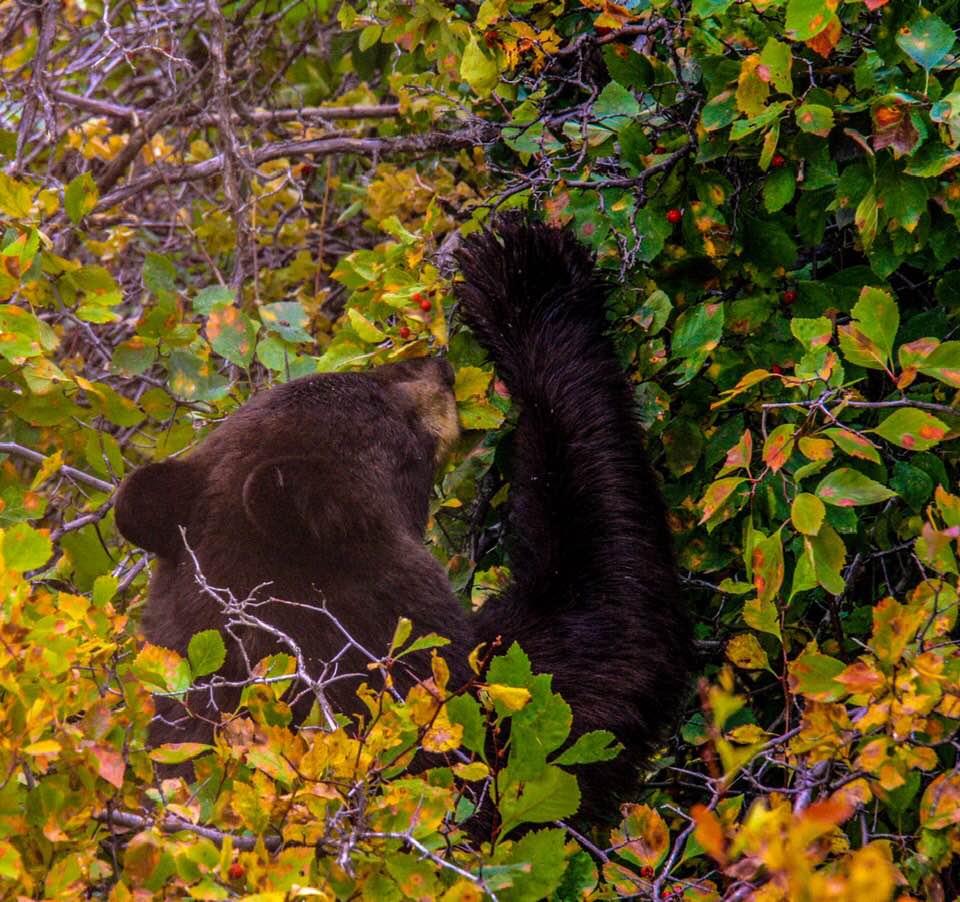This is an American Wild Plum (Prunus americana) thicket that is beginning to be invaded by Autumn Olive in the bottom left corner of the picture. The Autumn Olive is already greening up.
The Challenges Facing Native Thicket Species
Throughout the glaciated midwest, upper midwest, and the more agriculturally impacted areas of the south; the rise of invasive shrubs and vines in combination with habitat loss of prairie and savanna from agriculture have lead to an incredible decline of native thickets.
Thickets that form in forests have faired much better than thickets that form in prairies and savannas, as proportionately more prairie and savanna ecosystems have been converted to agriculture than forest ecosystems in Eastern America. So while forest thicket species of Bladdernut, Spicebush, Redbud, Flowering Dogwood, PawPaw, and Black Haw viburnum still have great population strongholds in the less invaded forests, savanna/prairie thicket species such as American Hazelnut, Wild Plum species, certain Hawthorn species, Wafer Ash, and Sweet Crabapple are suffering localized extinctions. These Prairie-Savanna thicket species require much more sunlight than the forest-thicket species. With humans having converted most of these Savanna-Prairie habitats to agriculture for livestock feed, the prairie-savanna thicket species have been abandoned to live on fence rows and forest edges. Further decline over the past 70 years or so is from those fencerow and forest edges being over taken by invasive thicket species such as Buckthorn, Amur Honeysuckle, Autumn Olive, Oriental Bittersweet, Kudzu, Japanese Honeysuckle and other edge dominant invasive plants, most of which are expanding their dominance outwards from metropolitan areas.
Photo by Neil Shook, Refuge Manager
Bear, Birds, and other mammals all seek out hawthorn fruits in the fall, a genus of small tree species that were once dominant in native prairie-savanna thickets. Hawthorns are now largely relegated to survive on man-made forest edges or in disturbed/broken forests that are being overcome with invasive plants.
The Value of Native Thickets
Currently the biggest voice for conservation of native thickets is the hunting community due to their recognition that thickets attract and support much of the wildlife they seek out. Birders also often note that thickets are frequently used by native birds for nesting, insect forage, and fruit and seed foraging. Think of native thickets as mini-forests which within every plant creates a berry or fruit, a seed or nut, or leaves that can be used by a great portion of the wildlife community from insects, to mammals, reptiles, amphibians, and birds. Prairie-Savanna thickets naturally would have been complemented by native wildflowers and grasses along with fire tolerant oaks and hickories that could withstand the surrounding prairies burning. The combination of native wildflowers/grasses, native thickets, and savanna spaced oaks and hickories was arguably the most wildlife supportive native ecosystem compared to continuous forest or continuous prairie. Beneficiaries of native prairie-savanna thickets would be Bear, Elk, White Tail Deer, Turkey and other ground dwelling birds like Bob White Quail, Prairie Chicken, Rough Grouse as well as non-ground dwelling birds, Raccoon, Possum, Skunk, Groundhogs, Rodents, Fox, Weasel, Rabbits, Snakes, and Tree and Meadow dwelling Frogs. Beavers once played a nation-wide role of thicket maintenance through the felling of large thicket suppressing forest trees which promoted faster regenerating thicket species who could withstand more frequent beaver harvests. The wetlands Beavers created also promoted wetland thickets. Edible species of native thickets also hold great value and potential in Native Plant Agriculture including the many Wild Plum species, American Hazelnut, PawPaw, Chokecherry, and Sweet Crabapple.
This fall we recently completed the first phase of a demonstration for our native thicket conservation project in collaboration with Kenton County Conservation District and Plantra who creates the tree tubes within which the native thicket species are temporarily protected within. The first phase of this thicket was only Prunus hortulana (Wild Goose Plum) and Eastern Redbud. Next fall we’ll add hawthorn species, Dogwood species, Viburnum species, Hazelnuts, and Sweet Crabapples.
Our Native Thicket Conservation Project
Goals
1. To establish native thickets containing our Conservation Target Species (CTS-explained at the end of the article) each year from the local collected seed, grown in our nursery for installing on public or non-profit owned land as well as privately owned lots.
2. To protect remnant populations of our Conservation Target Species through invasive plant management directly around the individuals found on non-profit, private, or public property. These are also our seed sources for local genotype.
3. To create the same awareness in public/private conservation efforts that focus on reforestation, wetland restoration/construction, and prairie restoration/construction; to the forgotten yet essential plant community that is native thickets/shrubland. Thickets are often thought of as merely successional as opposed to a long-term part of our different ecosystem types. The perception of native shrublands/thickets must grow to be recognized as a part of savanna, prairie, wetland, and forest ecosystem that adds notable biodiversity to these systems.
Approaches:
1. Execute the establishment/restoration of native thickets for educational/awareness raising purposes from the local genotype plants grown in our nursery in the public/private sectors.
2. Work to eradicate invasive plants surrounding remnant populations of our conservation target species on public, private, or non-profit owned land.
3. Use our Business Facebook page as our media outlet to model to and educate local and regional metropolitans about the need for intentional management of thicket species for biodiversity and to protect local populations.
4. Secure the short-term future of our conservation target species through creating horticultural and native plant-agricultural interest. These private sector plantings can conserve local genotype seed sources for long-term restoration. This does not mean the breeding of cultivars, rather, the adoption of straight species into the private sector landscape for seed production.
Conservation Target Species (CTS)
These are species deemed most at risk of localized extinction due to historical savanna/prairie habitat loss combined with more recent invasive plant expansion. All of the following species were once dominant in Prairie-Savanna Thickets.
Wild Plums species: Prunus americana, Prunus mexicana, Prunus angustifolia, Prunus munsoniana, and Prunus hortulana
Hawthorn species: More research needed to identify which are most at risk and which are more common/stable.
Sweet Crabapple (Malus coronaria), American Hazelnut (Corylus americana), Ninebark (Physocarpus opulifolius), and Wafer Ash (Ptelea trifoliata)
Non-Conservation Target Species that will be included for biodiversity depending on the site: Roughleaf Dogwood, Flowering Dogwood, Silky Dogwood, Elderberry, Ninebark, Nannyberry Viburnum, Chokecherry, Arrowwood Viburnum will be the majority. In later stages of thicket maturation, native vines that co-exist with thickets will be introduced such as American Bittersweet and Virginia Creeper, for added biodiversity.
HOW TO GET INVOLVED
1. Contributing Seed and learning how to identify CTS for seed collection and remnant protection. Following the infographics the Indigenous Landscapes Facebook page publishes is a great start in understanding these at-risk species.
2. If you work for a park system or non-profit land conservancy, talking to co-workers about the need for native thicket restoration, and creating a plan of action to add native thickets to existing fields or prairie restorations.
3. As a private individual, become a protector and/or promoter of native thickets through the establishment of native thickets on your property. The CTS are best established on sunny wood edges where invasive honeysuckle/buckthorn/autumn olive has recently been removed or in fields/prairies/lawns where they have the opportunity to spread out and fruit heavily. These private sector native conservation thickets will serve as future seed sources for larger restoration along with attracting local wildlife to your yard.
We’ll have all of our CTS available at plant sales next year for public purchase.



